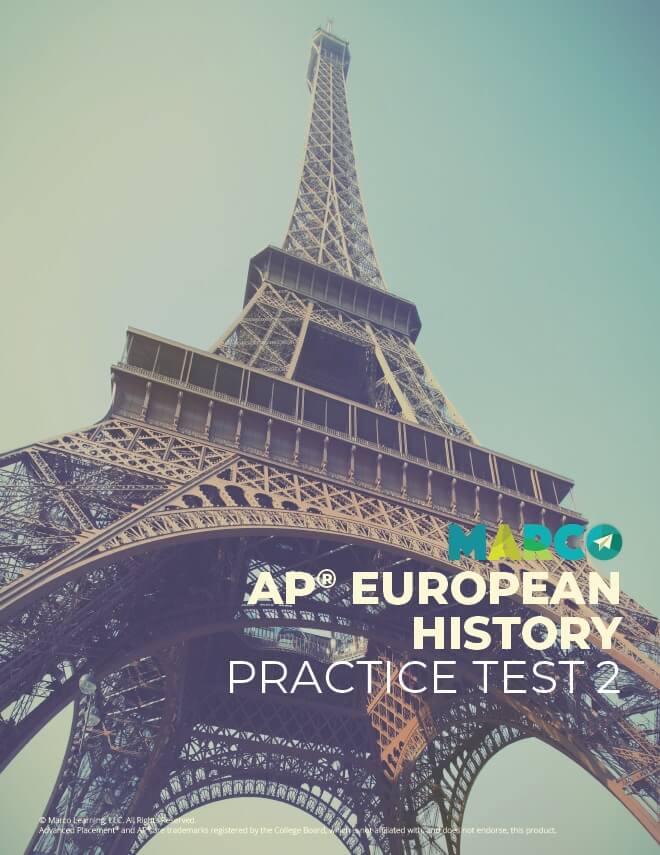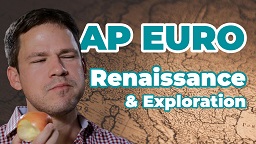


THE ITALIAN RENAISSANCE
The Renaissance (or “rebirth”) was inspired by a revival of interest in classical texts from ancient Greece and Rome, as well as a shift toward a more secular and individualistic way of thinking. Renaissance education was defined by humanism, which emphasized the study of classical history and literature as the foundation for education. Civic humanism, as seen in the writings of Machiavelli and Castiglione, specifically prepared young men for careers in public service. Increased trade and advancements in banking and bookkeeping created wealth, and new commercial elites, such as the Medici, became patrons of the great Renaissance artists.
Francesco Petrarca, known as Petrarch, was a fourteenth-century Italian poet who developed an interest in classical text from ancient Rome. He journeyed through Italy in search of lost classical texts, and was able to recover many of the writings of the ancient Roman philosopher Cicero. Petrarch is known as the “Father of Humanism” for his role in reviving scholarly interest in classical studies.
RENAISSANCE ART
Renaissance art focused on naturalistic portrayals of human subjects in imitation of the classical art of ancient Greece and Rome. Renaissance paintings placed great emphasis on balance, the use of linear perspective to give a three-dimensional appearance, and bright colors. Scenes from classical literature were favorite subjects of Renaissance artists, showing the influence of humanistic students on Renaissance art. This humanistic influence is especially evident in Raphael’s famous painting, The School of Athens, which has the famous Greek philosophers, Plato and Aristotle, in the center of a congregation of philosophers from classical antiquity.
THE NORTHERN RENAISSANCE
Following the invention of the printing press, interest in humanistic studies spread to Northern Europe. Northern Renaissance writers, such as Erasmus and Thomas More, began producing their own printed works that were inspired by classical authors. Northern Renaissance writers were heavily influenced by Christian humanism, producing works that were more focused on Christian principles and social reform than Italian Renaissance authors, who were more individualistic and secular in their approach. Erasmus of Rotterdam, a Dutch humanist scholar, was one of the best-known proponents of Christian humanism. In his book, The Praise of Folly, Erasmus used the Gospels to criticize several Catholic Church practices, such as the wealth of the bishops. In the Gospels, the Apostles were poor. If the bishops sought to be like the Apostles (as they claimed to be their successors), they should be poor as well. In this way, Erasmus used a classical text in order to advocate for social reform.
NEW MONARCHIES
During the Middle Ages, monarchs were not very powerful and often had to defer to the power of the Church and nobility. In the fifteenth century, monarchs in England, France, and Spain began to centralize power by collecting taxes directly and exercising more influence on the religious life of their subjects. These new monarchs set the stage for absolute monarchies that rule much of Europe two centuries later.
The marriage of Ferdinand and Isabella unified the Christian kingdoms of Aragon and Castile in Spain. They styled themselves as the “Catholic monarchs.” In 1492, Ferdinand and Isabella completed the Spanish Reconquista when they conquered Granada, the last Muslim kingdom in Spain. They financed the war partly through a “crusade tax,” which brought more money into the royal treasury. After conquering Granada, the Catholic monarchs proclaimed that all of their subjects would be Catholic and that Muslims and Jews would be expelled from the country if they refused to convert. They authorized and supported the Spanish Inquisition partly to make sure that these conversos did not lapse into heresy.
With the wealth that new monarchs gained from centralizing tax collection, they were able to finance voyages of exploration and the development of navigational technologies.
CAUSATION
The voyages of exploration generated wealth through colonization and trade, which increased the power of Western European monarchs.
THE AGE OF EXPLORATION
In the fifteenth century, new navigational technologies, such as the magnetic compass and Mercator projection maps, made it possible for Europeans to sail beyond the Mediterranean Sea and the coastline of Europe. After the Fall of Constantinople, European monarchs desired to find the nautical trade route to Asia. The Portuguese sought to sail east around Africa, while Ferdinand and Isabella financed Christopher Columbus’ voyage to find a westerly route to the Indies. Upon discovering the New World, Europeans conquered native populations using new weapons technologies, such as firearms.
The Columbian Exchange is the most important legacy of the Age of Exploration. While Columbus was not the first European to find the New World, his voyages began a permanent exchange of people, goods, food, animals, ideas, and diseases between the Old and New Worlds. Europeans introduced livestock in the Americas and returned to Europe with tomatoes, potatoes, and tobacco. A lack of immunity to European diseases had a devastating effect on native populations. Spanish and French missionaries spread the Christian religion throughout North and South America.
TIMELINE
1341 Petrarch is crowned as poet laureate in Rome in recognition for writing Africa, an epic poem about the Roman general Scipio Africanus.
1450 A vernacular German poem is printed on Johannes Gutenberg’s printing press.
1453 The Byzantine capital of Constantinople falls to the Ottoman Turks, impacting trade routes and leading Greek scholars to flee to Italy with classical texts.
1492 The Kingdom of Granada falls to Spanish forces, completing the Spanish forces, completing the Spanish Reconquista. In the same year, Ferdinand and Isabella expelled Muslims and Jews from their kingdom and commissioned Columbus’ first voyage.
1511 The Praise of Folly, Erasmus’ popular satirical essay, is printed for the first time.
The best way to get better at something is by practicing.
That’s why it’s so important that you take practice tests to help you get better at the AP European History Exam. Only then can you expect to get a good score—and even improve your score.
Download your free AP® European History practice test HERE.
Download your printable study guides for all of the units for AP European History HERE.
 Help
Help